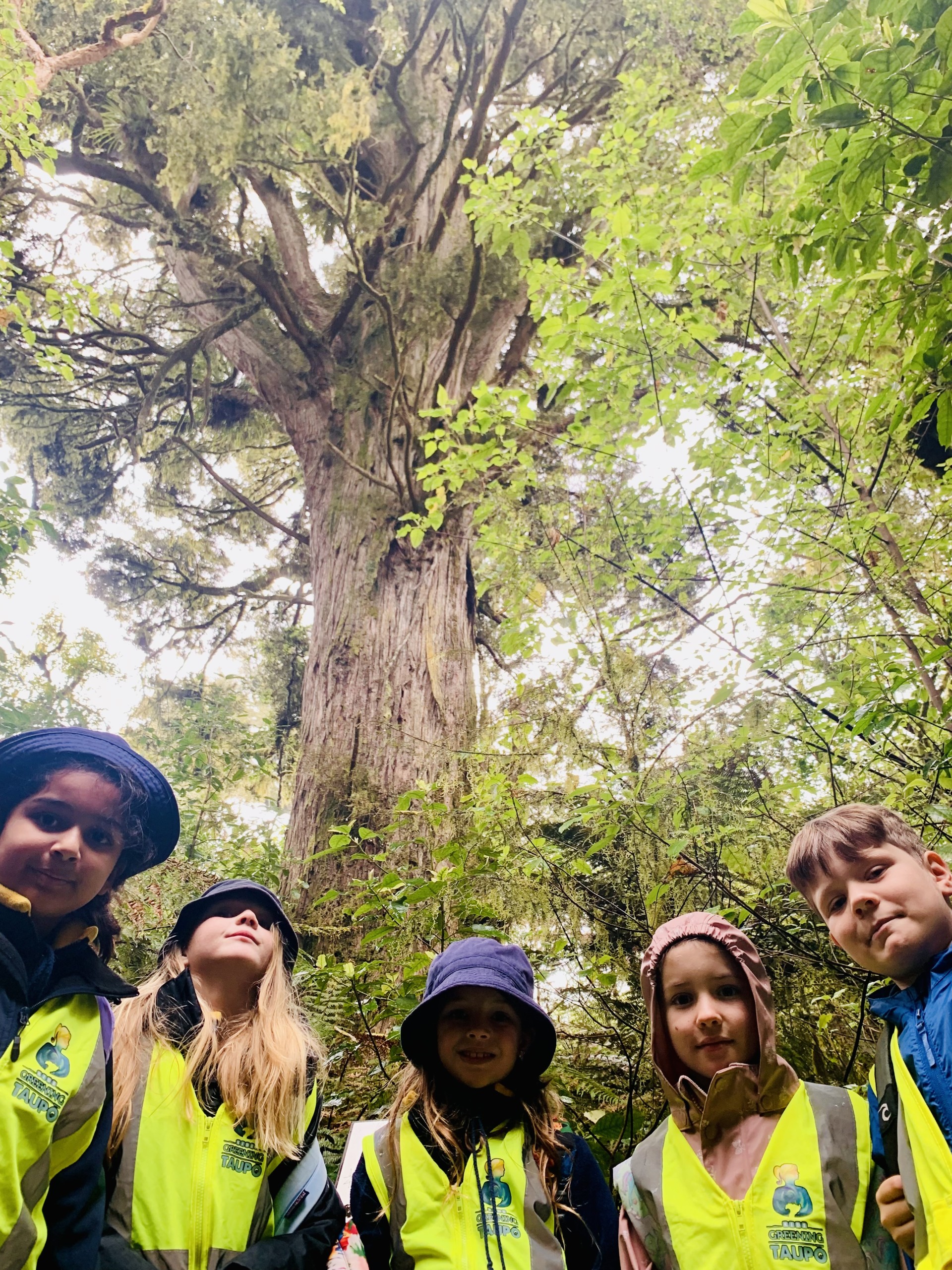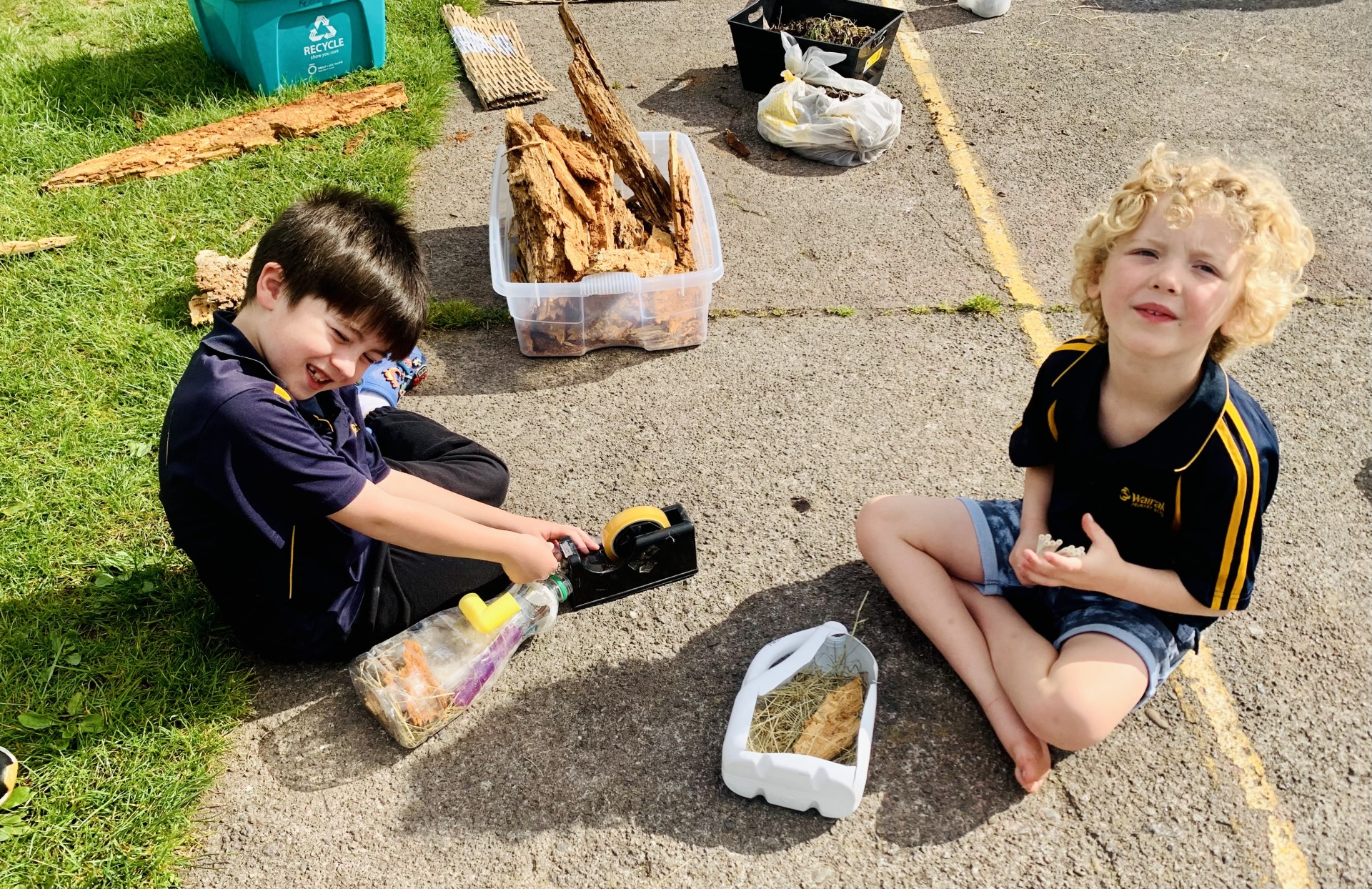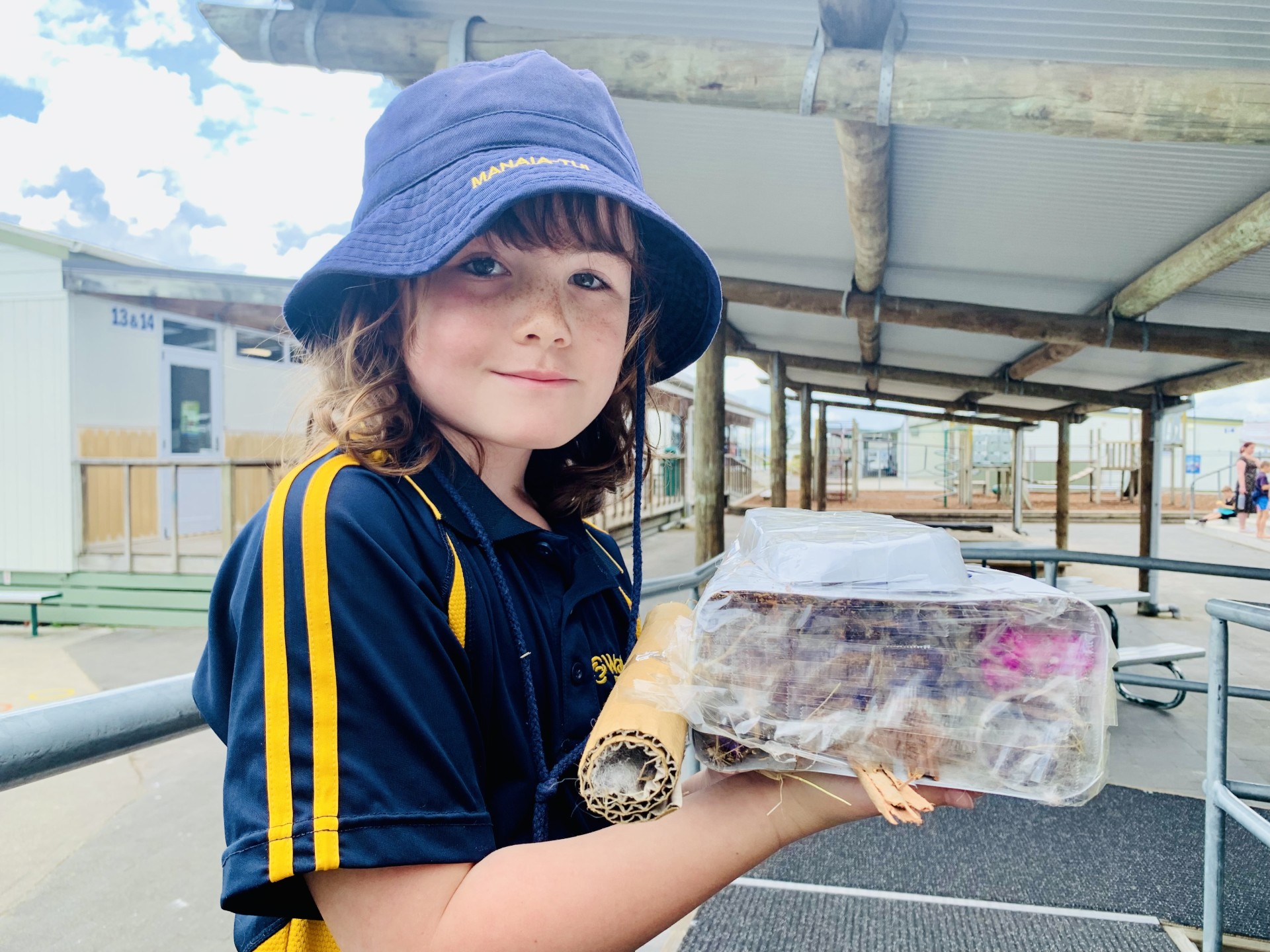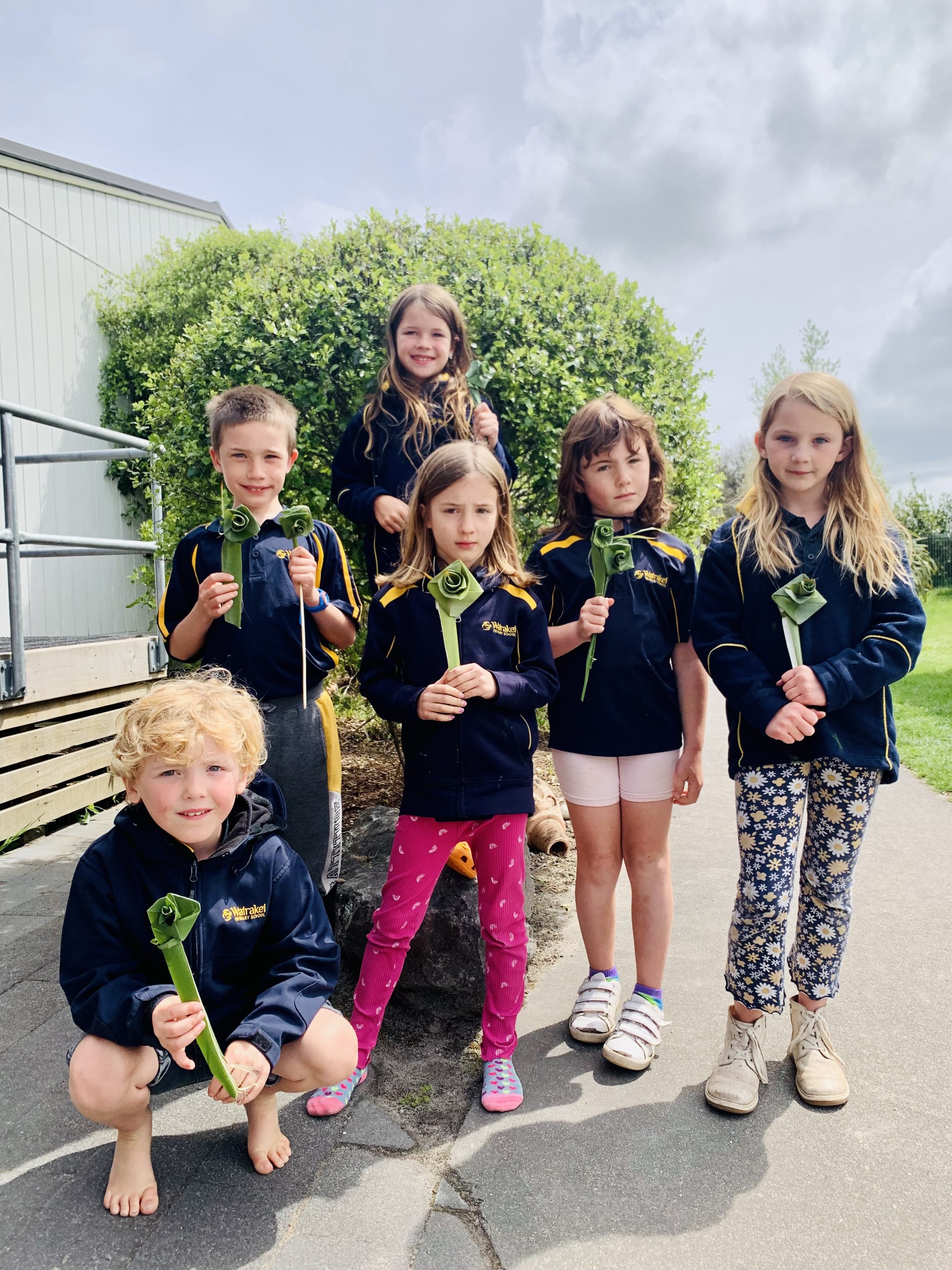The technological design process involves designing a product, creating it, testing it, and constant reflection about how to improve it. Room 11 wondered what their call to action could be as kaitiaki? How could we be part of a solution and what could we design?
We didn’t put them in good spots.
We put them in places that were too dry. Let’s try damper places.
Maybe we need to leave them there longer.
After reflecting, students chose what they thought were better places to leave the tunnels for a longer time. To find out about the wildlife we were tracking, we had to know more about it, so we started with insects. Student wonderings included: What are insects? What habitats do they like to live in? What do they do? How can we have more insects?
This is what we found out.
A worm isn’t an insect but they help us by eating through dirt and pooping it out to make great compost and help grass grow.
A slater is not an insect but they make holes in the rotten wood to live in and break it up.
A bee is an insect and when it goes on flowers it gets pollen on its legs. When it moves it takes the pollen to other flowers to help them grow.
Once students learnt this, they were determined to increase the insect population at school. To achieve this, they set out to design bug hotels. We brainstormed materials we could use and students thought they could use natural resources from around the school and bring other things from home. The class decided that using plastic bottles would be a good way of repurposing materials.
They are good because we can see if any bugs are in there and we can move them around easier than wood.
We can move them around to better places if no bugs go in them.
This rotten wood is a hotel already because it has slaters in it . It’s soft so some insects can dig into it easily.
During the creating phase, students had a few problems with their hotel designs.
I needed to make my design tighter, so the stuff wouldn’t fall out and I didn’t want the wood and other stuff to fall onto my spiders. I made it tighter by stuffing in hay, tubes, and wood bits.
How will my bug hotel stay in the tree? Maybe I can tie it or hang it.
I needed my design to be tighter so mice couldn’t get in.
Some of the biggest problems arose once bug hotels had been placed around the school, and tested against the natural environment and other forces at work at school.
The rolls fell off the side of my hotel so I plan to use an egg carton instead of the rolls. The egg carton might get wet and soggy so I’d have to put some wrap around it so it’s waterproof.
Some people got it and wrecked it when it was in the Leaver’s Garden so we needed to move it away to a safer place to protect it.
Where could we move them to protect them and attract the most insects? Maybe the tracking tunnels in the gully had the answers we needed? The students were excited to see what lay in wait for us. Look at what they found.
Insect prints! These findings along with what we had learnt helped us work out where to put the bug hotels to attract tenants and keep them safe. While the exact location must remain a secret, students can give you a few clues.
They are somewhere safe.
They are hidden from predators.
They are in damp and shady places with a bit of sun.
This inquiry sparked the curiosity of Room 11 students who found their calls to action based on their engagement with nature, especially after visiting Opepe track for a class trip. Students worked on their own projects such as designing a secret habitat garden, bird feeders, reusing garden waste to make flowers, and saving school gardens by rehousing snails that damage the plants.





Comments
No one has commented on this post yet.